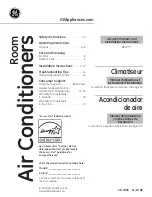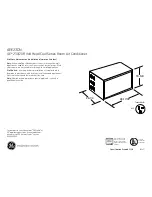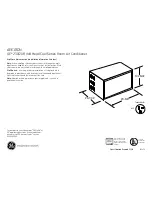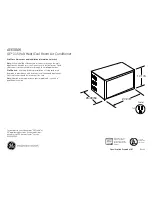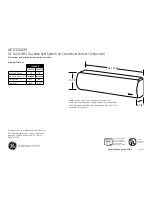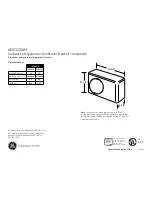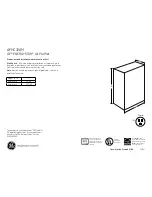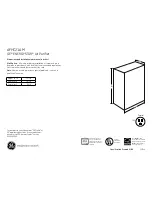
YORK
5587001-YSG-A-520 | Start-Up & Operation Guide
10
21.
Verify the condensate float switch is located just
before the top of the drain pan. Adjust if necessary.
22. Check for gas leaks in the unit piping and the
field supply piping.
Unit Checks (Power Applied)
1. Apply 3-phase power and verify its value. Volt-
age imbalance should be no more than 2% of the
average voltage.
2.
Remove the protective film from the unit control
-
ler display if still adhered.
3. Verify programmed unit controller setpoints.
4. Verify the variable frequency drive (VFD) set-
points for MZVAV units and optional VFD exhaust
or return fans. The VFD for the supply fan is in
the supply fan blower compartment. The VFD for
the exhaust or return fan is located in the return
air compartment.
5. Verify correct fan rotation (the fan should rotate
in the direction of the arrow on the fan housing).
6. Visually inspect the energy recovery wheel (ERW)
bypass dampers to ensure links are correctly con-
nected and there are no visual obstructions. En-
sure the dampers are aligned in a way that pro-
vides a sufficient seal when closed. Modulate the
dampers via the commissioning mode. Open and
close the dampers to verify correct operation.
7. Power ON the crankcase heater 12 hours prior
to starting the unit to ensure any liquid that may
have migrated into the compressor shell evapo-
rates before compressor start-up.
8. Verify proper compressor rotation.
CAUTION
This unit uses scroll compressors, which will only
operate in one direction. Operation of the compres-
sor in the reverse direction does not produce any
capacity and will cause the compressor to cycle on
internal overload. Failure to observe these steps
could lead to compressor failure.
a. Monitor the suction and discharge pressures
of the respective refrigerant circuit while the
compressor cycles ON.
b. If the discharge pressure increases and suc-
tion pressure decreases as the compres-
sor cycles ON, the compressor is properly
phased and operating in the correct rotation.
c. If the optional suction and discharge pres-
sure transducers are installed, the suction
and discharge pressures can be monitored
via the unit controller.
d. If the optional suction and discharge pres-
sure transducers are not installed, pressures
must be monitored with a manifold gauge
connected to the service valves located on
the suction and discharge lines.
9. Check the compressor oil level to ensure that
there is no liquid refrigerant in the lower shell of
the compressor.
a. When the compressor is running in stabilized
conditions, the oil level must be between 1/2
and 3/4 in the oil sight glass.
NOTE:
At shutdown, the oil level can fall to the bottom
limit of the oil sight glass.
10. Adjust the high duct static pressure switch. The
adjustment range is 0.4 iwg ± 0.02 iwg to 12.0 iwg.
a. Turn the adjusting screw counterclockwise
until motion stops.
b. Turn the adjusting screw clockwise for four
complete turns to engage the spring.
c. The next ten turns are use for calibration.
Each full turn represents approximately 1.16 iwg.
NOTE:
Properly calibrate the high duct static pressure
switch using a digital manometer or equal mea-
suring device to confirm the actual setpoint.
11. Check the supply air CFM.
The unit may be equipped with an optional supply
fan airflow measuring station (AMS). When appli-
cable, check to ensure the unit airflow is deliver-
ing the correct airflow.
a. The supply air blower RPM depends on the
required CFM and the static pressure resis-
tances of the unit components as well as
both the supply and return air duct systems.
b. Use
or
to determine the RPM for the supply air
blower.
c. The supply air CFM must be within the limita-
tion shown in
.
When the unit is not equipped with an AMS, the
field can order and install a kit using the following
part numbers.
a. 25–30 ton: transducer (S1-02550574000)
and silicone tube (S1-02811957000)
b. 40–50 ton: transducer (S1-0255057500) and
silicone tube (S1-02811957000)





























